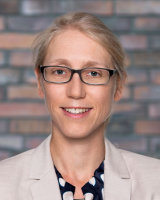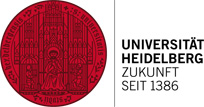Three Additional ERC Grants for Heidelberg
Three women scientists from Heidelberg University were awarded highly endowed grants from the European Research Council (ERC): Biophysicist Prof. Dr Frauke Gräter, astrophysicist Prof. Dr Saskia Hekker, and physicist Prof. Dr Christine Selhuber-Unkel are each receiving an ERC Consolidator Grant for excellent young researchers. The ERC grants will fund their research for a period of five years. A total of approximately 6.5 million euros have been earmarked for their work. Frauke Gräter and Saskia Hekker, besides their professorships at Ruperto Carola, are also research group leaders at the Heidelberg Institute for Theoretical Studies (HITS). In addition, a new Emmy Noether junior research group began its work under the direction of Dr. Dominika Wylezalek at the Center for Astronomy of Heidelberg University (ZAH).

Photo: HITS / Annette Mück
Frauke Gräter is a professor of molecular biomechanics at Heidelberg University. Her eponymous research group at HITS uses methods of high-performance computing and simulation techniques to investigate how mechanical forces influence the inner processes of living organisms. Proteins are a particular focus. In her ERC project, “Mechanoradicals in Collagen” (RADICOL), Prof. Gräter and her team are looking at the impact of mechanical loads on collagen, which is the main component of our connective tissue. In particular, they are investigating whether, and how, highly reactive radicals originate in the collagen of e.g. the Achilles tendon and damage the tissue. The results may supply important leads for our understanding of aging and pain. The ERC has approved funding amounting to approximately two million euros.

Photo: HITS / Annette Mück
In the field of astrophysics, Saskia Hekker studies the inner structures of stars through their global oscillations. These oscillations contain information about the physical conditions inside the stars. In her ERC project “Internal structure of red-giant stars through the sound of dipole oscillation modes” (DipolarSound), she will investigate “red giants” by means of asteroseismology. These large, bright stars exhibit different oscillations. Through the analysis of these oscillation spectra Prof. Hekker wants to discover the physical origin of these differences. The European Research Council is funding the project with two million euros.

Photo: Tobias Schwerdt
Christine Selhuber-Unkel’s research focuses on new structured materials, whose functions are controlled through molecular components and nanoparticles. At Heidelberg University’s Institute for Molecular Systems Engineering (IMSE), Prof. Selhuber-Unkel conducts research at the interface of chemistry, physics, materials science and biology. Her ERC project “Photomechanical writing of cell functions” (PHOTOMECH) aims at regulating cell functions through external physical forces. To this end, she combines photoswitchable materials with a complex optical system that uses intensive laser light pulses. This laser is intended to be used as a “pen” to write cell functions in three dimensions and to enable the growth of cell tissues. The project is being funded with approximately 2.5 million euros. Prior to receiving the current grant, she received an ERC Starting Grant and three supplementary Proof of Concept Grants from the European Research Council.
How do galaxies form and what physical processes influence their further development? These questions are the focus of the members of the new Emmy Noether junior research group at the ZAH. The research team led by Dr Dominika Wylezalek is concentrating on the role growing supermassive black holes have in the evolution of galaxies. Over the next six years, the physicist will receive funding from the German Research Foundation (DFG) totalling approximately 1.6 million euros.
“Supermassive black holes are rather small objects in physical terms but during their active growth phases they appear to have a major influence on the development of galaxies and ultimately on how our universe appears today,” explains Dr Wylezalek, whose “Galaxy Evolution and AGN” (GALENA) research group is located at the Institute for Astronomical Computing of the ZAH. The researchers will investigate the physical processes related to galaxy formation in different cosmological epochs and scales. Their goal is to find evidence for the self-regulation of black holes and their galaxies. They also aim to identify the strength, range, and effect of feedback processes of actively growing supermassive black holes.
The ERC Consolidator Grant is given to promising researchers whose own independent working group is in the consolidation phase. Scientific excellence is the main criterion. The Emmy Noether Programme of the German Research Foundation affords particularly qualified young researchers the opportunity to qualify for a university professorship over a six-year period during which they lead their own independent junior research group.

